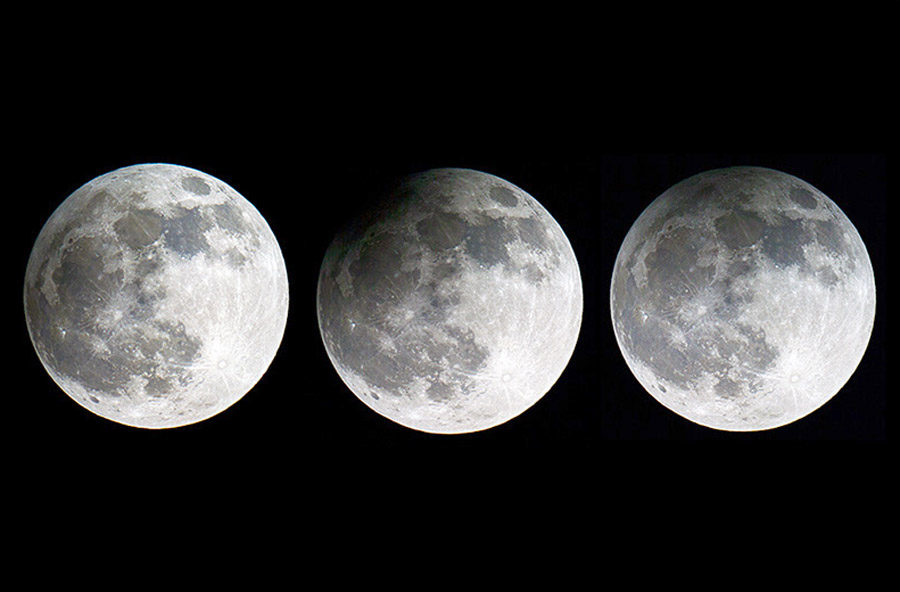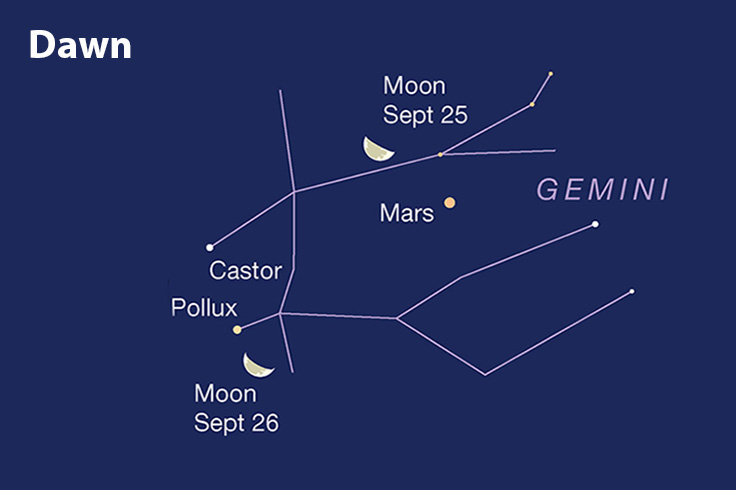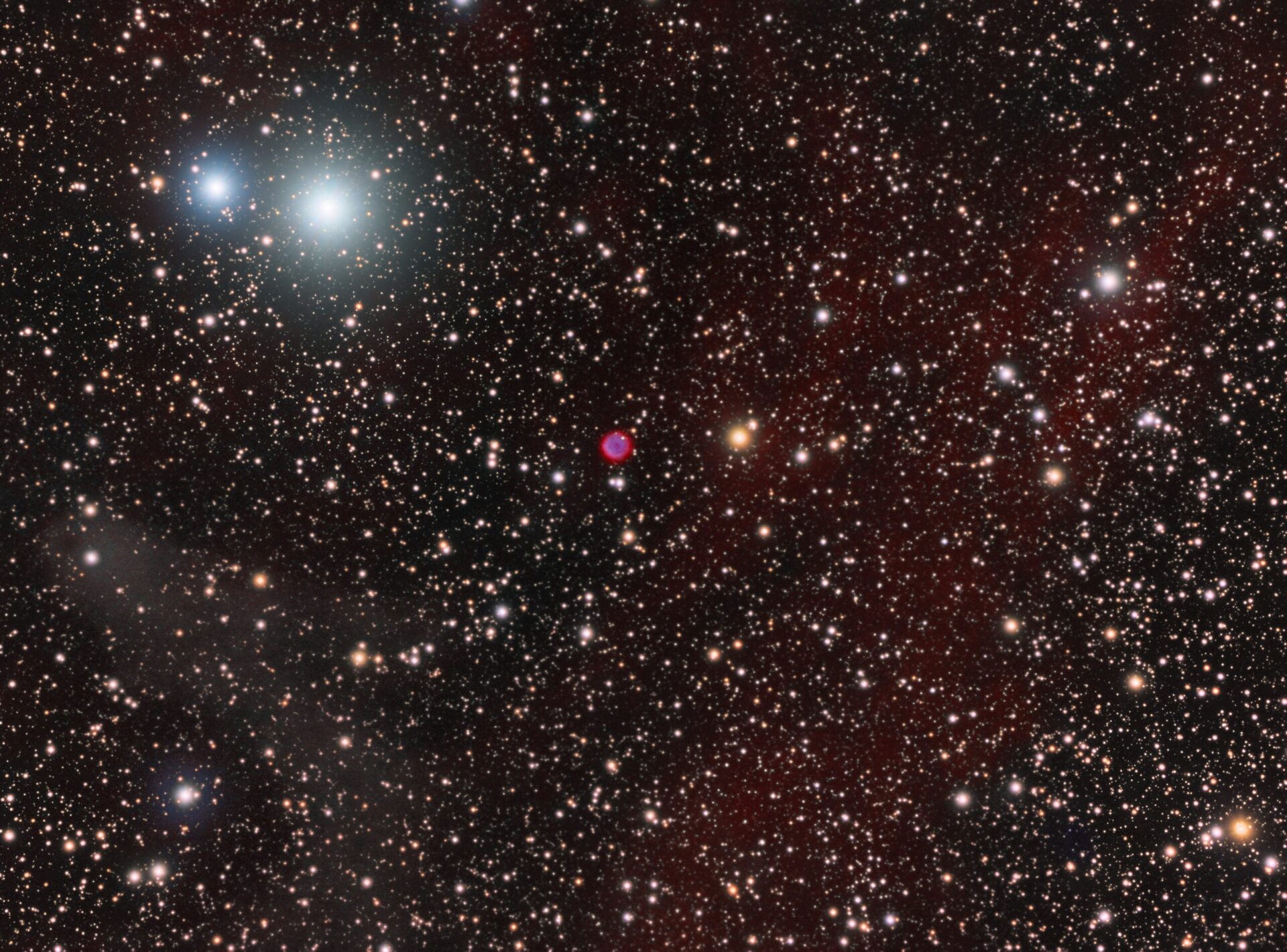[ad_1]

Copyright, Catalin Paduraru
I love it when an astronomical event occurs at a convenient time. Such will be the case when the Harvest Moon undergoes a partial lunar eclipse the night of September 17–18. Lucky observers across a good chunk of the Americas can watch it happen without losing sleep. All or part of every lunar eclipse is visible from half the Earth. Observers in Europe and Africa will also enjoy views of the semi-darkened Moon but during the wee hours after midnight.

Sky & Telescope graphics
As eclipses go, this one is minor with a magnitude of just 0.09, meaning Earth’s shadow will cover just 9% of the Moon’s diameter at mid-eclipse. In terms of total area, also called obscuration, 3.8% of the Moon will reside in the umbra at maximum. Most of our satellite’s time will be spent in the penumbral or outer shadow cast by Earth; it lingers just 65 minutes in the umbra. The shadow will appear to move from the northeastern limb to the northwestern limb as the Moon hurries eastward at around 3,960 kilometers per hour (2,460 mph). If that sounds fast it is. The Moon reaches perigee, closest approach to Earth, around 9:30 a.m. EDT the next morning, traveling several hundred kilometers per hour faster than its average velocity.
Eclipse phases by time zone
| Eclipse Event | UT | ADT | EDT | CDT | MDT | PDT | AKDT |
| Penumbra first visible? | ~1:30 | ~10:30 p.m. |
~9:30 p.m. | ~8:30 p.m. | ~7:30 p.m. | — | — |
| Partial eclipse begins | 2:12 | 11:12 p.m. | 10:12 p.m. | 9:12 p.m. | 8:12 p.m. | 7:12 p.m. | — |
| Mid-eclipse | 2:44 | 11:44 p.m. | 10:44 p.m. | 9:44 p.m. | 8:44 p.m. | 7:44 p.m. | — |
| Partial eclipse ends | 3:17 | 12:17 a.m. | 11:17 p.m. | 10:17 p.m. | 9:17 p.m. | 8:17 p.m. | 7:17 p.m. |
| Penumbra last visible? | ~4:10 | 1:10 a.m. | 12:10 a.m. | 11:10 p.m. | 10:10 p.m. | 9:10 p.m. | 8:10 p.m. |
Proximity to perigee also means the full Moon will appear larger than usual, swelling to an apparent diameter of 33.7′ or nearly 3′ larger than average. Good thing. Without the extra girth, the shadow bite would be even smaller and the eclipse correspondingly shorter! The Harvest Moon will be the second-closest full Moon of the year after October’s Hunter’s Moon. Since there’s no way to directly compare a perigean Moon to one at apogee, when the Moon is farthest from Earth, most people can’t distinguish a size difference. But if you take a quick photo with your smartphone and then do the same with the apogee full Moon on April 13, 2025, you’ll be able to tell them apart by placing the two unequal moons side by side.

Bob King
You can watch the eclipse with your eyes, binoculars, or a telescope. Most observers will detect penumbral shading 30–40 minutes before partiality as a dull shading along the Moon’s eastern (celestial east) limb. As it digs deeper the into the penumbra, the shadow becomes increasingly obvious, with the Moon appearing like a soiled white plate.
I enjoy the soft, fuzzy look of the umbra’s border through the telescope as the primary eclipse gets underway. No matter your instrument, the gray veil of shadow will creep over the lunar north polar region like a gathering storm.

Sagredo / Public domain
In case the weather gods upend your plans, you can watch the Harvest Moon eclipse online courtesy of Italian astronomer and astronomy popularizer Gianluca Masi. He’ll livestream the show starting at 00:30 UT on September 18th (8:30 p.m. EDT on September 17th). The next total lunar eclipse occurs on March 13–14, 2025, and will be centered over the Americas.
More lunar amusements

Stellarium
On September 17th, the morning before the eclipse, observers in the western half of North America, Hawai’i, and parts of Indonesia and Australia can watch the waxing Moon occult the planet Saturn. Check the International Occultation Timing Association’s website for a map and details on times for individual cities. Five mornings later on September 22nd, the waning gibbous Moon occults the Pleiades star cluster. The passage is nearly central for many U.S. locations and multiple stars will be covered. Observers in the eastern half of the country will see the occultation during morning twilight; in the western states it happens in darkness.
To determine the Moon’s trajectory through the cluster so as to know which stars will disappear and reappear for your location, simulate the occultation using a free software app such as Stellarium Mobile. After downloading it from Google Play or Apple’s App Store, set the date and play with the time. As you advance the clock forward, note the times the Moon covers and uncovers various cluster members. You can also download Stellarium for your laptop or simply use the interactive Web version, Stellarium Web. Couldn’t be easier. Enjoy your moments with the Moon this month.
[ad_2]
Source link





No comments! Be the first commenter?